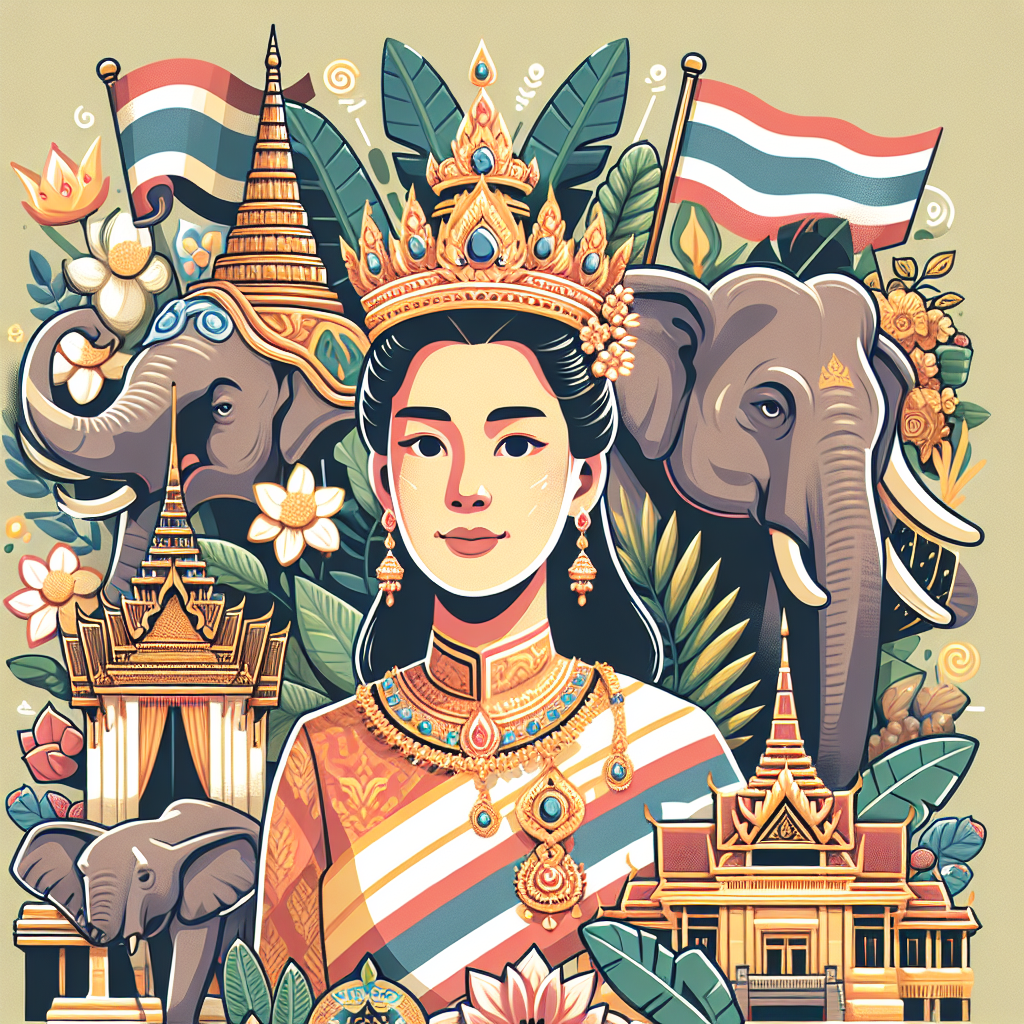The Historical Role of Queens in Thailand: Exploring Their Cultural and Political Influence Over the Centuries
Thailand, known for its rich cultural heritage and distinguished royal lineage, has a long-standing tradition of queens who played pivotal roles in the socio-political landscape of the nation. From the legends of powerful queens in ancient kingdoms to the contemporary role of the monarchy, the influence of queens in Thailand has been both significant and multifaceted. This article delves into the historical roles of queens in Thailand, examining their cultural and political contributions over the centuries.
Ancient Kingdoms and Legendary Queens
The history of queens in Thailand can be traced back to ancient times, with records of influential female figures in early kingdoms such as Sukhothai and Ayutthaya. Sukhothai, often regarded as the first Thai kingdom, was established in the 13th century and was marked by the flourish of art, culture, and governance. Some legends speak of queens who were not only consorts but also influential political figures. For instance, Queen Si Suda, the wife of King Ramkhamhaeng, played a crucial role in the establishment of the Thai writing system and the propagation of Theravada Buddhism.
The Ayutthaya Kingdom (1350-1767), a significant empire in Southeast Asia, further illustrated the impact of queens. Historical accounts note Queen Suriyothai, who is celebrated for her bravery and strong leadership during the Thai-Burmese wars. She reportedly donned armor and rode into battle to defend her kingdom, becoming a symbol of courage and loyalty. Her legacy not only inspires contemporary Thais but also highlights the essential roles queens played in military and political matters.
Political Power and Soft Power
As dynastic politics evolved, so did the roles of queens. While traditionally queens were often seen primarily as wives and mothers of kings, many wielded considerable influence behind the scenes. They participated in the administration of the kingdom, serving as advisors and diplomats. Queens such as QueenNang Kham, wife of King Narai, during the Ayutthaya period, were known to navigate complex political landscapes with skillful diplomacy and strategic marriages. The royal strategy of forming alliances through royal marriages was not uncommon and underscores the importance of queens in the politics of the era.
By the Rattanakosin period, beginning in 1782, the monarchy became more centralized, yet the relevance of queens remained intact. In the late 19th and early 20th centuries, during the reign of King Chulalongkorn (Rama V), who recognized the need for modernization, the queen’s role expanded to include social reforms. Queen Saovabha Phongsri was involved in education and healthcare initiatives, underscoring the queens’ contributions beyond political intrigue to social welfare and cultural development.
Cultural Influence and Representation
Queens in Thailand have also been instrumental in preserving and promoting Thai cultural identity. Art, literature, and religion often intertwined with the queen’s presence. Throughout history, queens have been patrons of the arts, encouraging the production of literature, music, and visual arts that reflect Thai values and traditions. The importance of queens in artistic expression can be seen in the classical dance forms of Thailand, where elegant representations of queens are often performed, depicting their grace and wisdom.
In terms of religious influence, queens historically assumed roles as spiritual leaders. They participated in Buddhist ceremonies, promoted monasteries, and supported the arts linked to religion. Their active roles in religious activities contributed to their status and helped cement their position within society as virtuous and devout figures.
Modern Era: The Current Queen and Changing Perceptions
Fast-forwarding to contemporary Thailand, Queen Suthida Bajrasudhabimalalakshana, the current queen consort, represents a modern embodiment of a queen’s role. Since her marriage to King Maha Vajiralongkorn in 2019, Queen Suthida has engaged in various social and charitable initiatives, focusing on health, education, and welfare. Her activities underline the shift in the perception of queens from powerful political players to compassionate leaders, reflecting the changing dynamics of monarchy in the 21st century.
The Thai monarchy today must navigate a complex socio-political environment characterized by shifting public sentiments toward the royal institution. Amidst growing calls for democracy and reform in Thailand, queens are increasingly viewed through the lens of modernity, where their roles encompass advocacy, charity, and being symbols of national identity and unity.
The Queens’ Significance in Thai Society
The historical and ongoing significance of queens in Thai society cannot be overstated. They have been vital in shaping the cultural and political landscape of the nation. The legacy of queens, from ancient times to present day, illustrates how they embody national values and traditions. As figures of respect and reverence, queens often serve as sources of inspiration and hope for the Thai people.
Conclusion
The historical role of queens in Thailand encapsulates a unique blend of power, responsibility, and cultural influence. From the legendary warriors like Queen Suriyothai to the contemporary endeavors of Queen Suthida, queens have left indelible marks on Thai history and culture. Understanding the multifaceted roles of queens in Thailand offers deeper insights into the interplay between gender, power, and cultural heritage in a rapidly changing world. As Thailand continues to evolve, the legacy of its queens remains an integral part of its identity, reflecting the strength, resilience, and dedication of women throughout its narrative.
